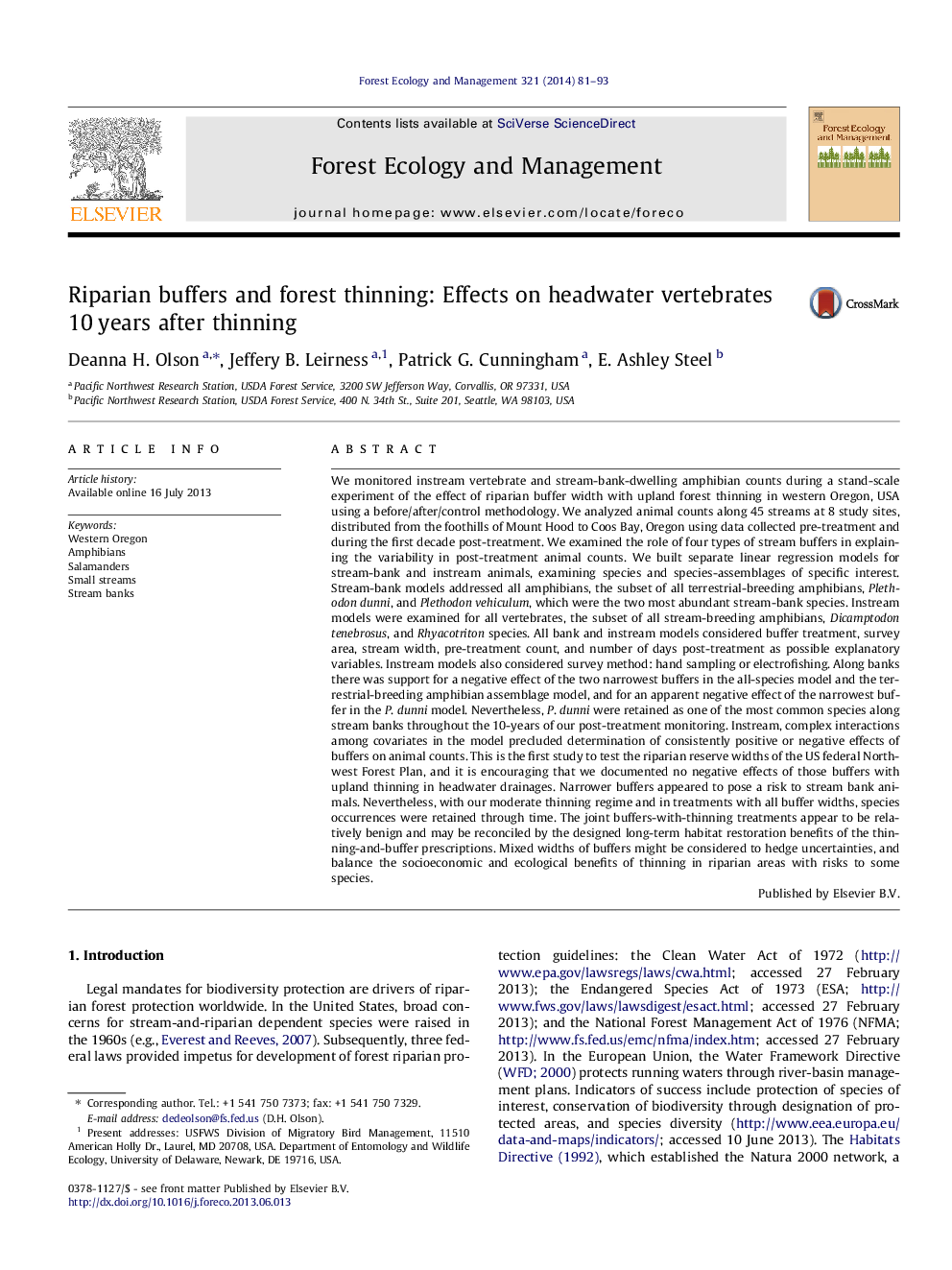| کد مقاله | کد نشریه | سال انتشار | مقاله انگلیسی | نسخه تمام متن |
|---|---|---|---|---|
| 86476 | 159191 | 2014 | 13 صفحه PDF | دانلود رایگان |
• We tracked 10-year animal responses to different stream buffer widths with forest thinning.
• We found a risk to stream bank amphibian biodiversity of thinning within 6–15 m of small streams.
• We provide the first support for no adverse effect from US Northwest Forest Plan buffers, ∼70–145 m.
• A mixed approach of different buffer widths may balance forest management objectives and risks.
• Our results may inform local management approaches and provide insights to other aquatic systems.
We monitored instream vertebrate and stream-bank-dwelling amphibian counts during a stand-scale experiment of the effect of riparian buffer width with upland forest thinning in western Oregon, USA using a before/after/control methodology. We analyzed animal counts along 45 streams at 8 study sites, distributed from the foothills of Mount Hood to Coos Bay, Oregon using data collected pre-treatment and during the first decade post-treatment. We examined the role of four types of stream buffers in explaining the variability in post-treatment animal counts. We built separate linear regression models for stream-bank and instream animals, examining species and species-assemblages of specific interest. Stream-bank models addressed all amphibians, the subset of all terrestrial-breeding amphibians, Plethodon dunni, and Plethodonvehiculum, which were the two most abundant stream-bank species. Instream models were examined for all vertebrates, the subset of all stream-breeding amphibians, Dicamptodon tenebrosus, and Rhyacotriton species. All bank and instream models considered buffer treatment, survey area, stream width, pre-treatment count, and number of days post-treatment as possible explanatory variables. Instream models also considered survey method: hand sampling or electrofishing. Along banks there was support for a negative effect of the two narrowest buffers in the all-species model and the terrestrial-breeding amphibian assemblage model, and for an apparent negative effect of the narrowest buffer in the P. dunni model. Nevertheless, P. dunni were retained as one of the most common species along stream banks throughout the 10-years of our post-treatment monitoring. Instream, complex interactions among covariates in the model precluded determination of consistently positive or negative effects of buffers on animal counts. This is the first study to test the riparian reserve widths of the US federal Northwest Forest Plan, and it is encouraging that we documented no negative effects of those buffers with upland thinning in headwater drainages. Narrower buffers appeared to pose a risk to stream bank animals. Nevertheless, with our moderate thinning regime and in treatments with all buffer widths, species occurrences were retained through time. The joint buffers-with-thinning treatments appear to be relatively benign and may be reconciled by the designed long-term habitat restoration benefits of the thinning-and-buffer prescriptions. Mixed widths of buffers might be considered to hedge uncertainties, and balance the socioeconomic and ecological benefits of thinning in riparian areas with risks to some species.
Journal: Forest Ecology and Management - Volume 321, 1 June 2014, Pages 81–93
